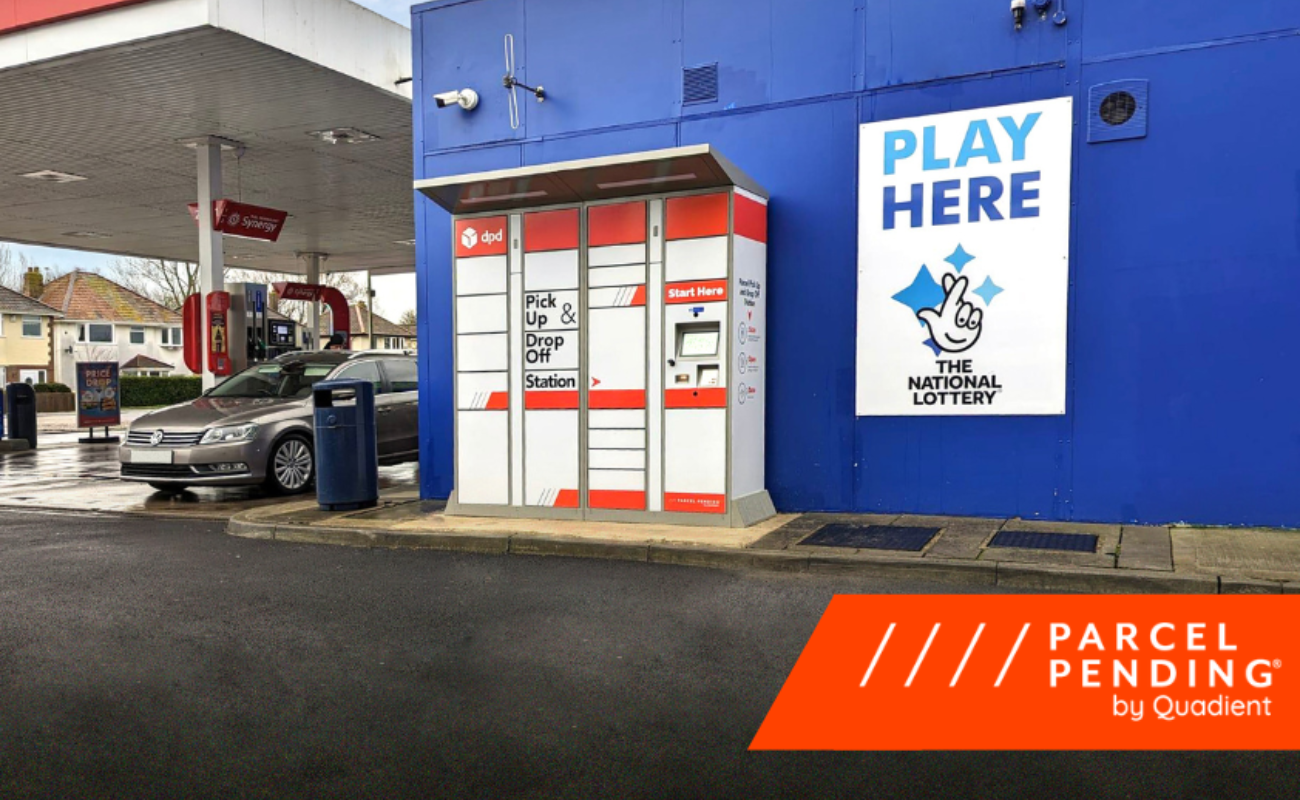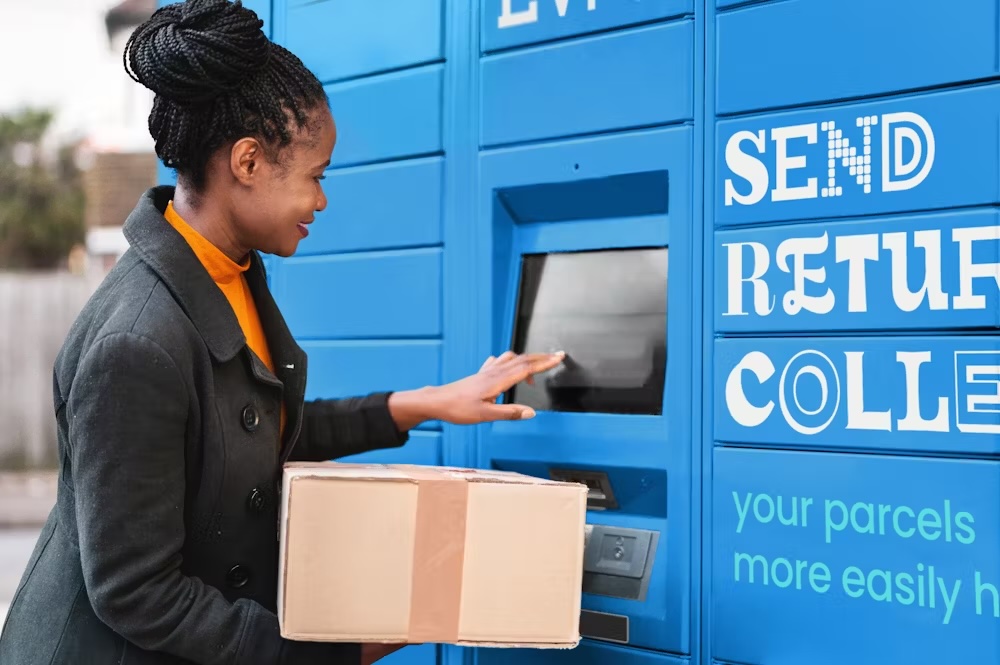DeliveryX sat down with Gary Winter, VP global strategic initiatives, Quadient, to find out more about the provider of innovative parcel management solutions.

Q: Are you seeing a real growth in parcel locker rollouts, PUDO networks, especially the automated systems? Is this a delivery system that is really going to kick off 2023/2024?
I joined the business just over three years ago, and I joined because I genuinely believe its time has come. The PUDO networks are mature in the UK. There are 50,000 convenience stores across the country, and probably half of them are already involved in handling parcels inbound and outbound. The volumes that are going through are growing all the time.
The role I had immediately before this was working with a large PUDO network helping them go from a one-stop-shop to the multi-carrier business that they are now. You can see the growth in parcel volume going through there.
We think the time for automation is right. To have the open locker network that we’re building in the UK – we are in the midst of rolling out a 5,000 location agnostic network – for success you need two things: great technology and great locations. One is useless without the other.
You’ve got a great location if it’s where people are passing frequently or live nearby – if it’s on their route to the gym, office, station, or it’s really close to their home. If you put the right customer experience there, people will use it. They’ll get comfortable with it, very, very quickly.
We’ve got probably the biggest agnostic locker network in Japan. We have almost 7,000 lockers; 4,500 of those are just in Tokyo. And 95% of the population of Tokyo are within that magical five-minute- “slipper distance”-“hyper convenient” location. If something is that close, it doesn’t feel like an inconvenience.
Q: Home delivery has been the main choice for consumers for some time, but we have seen peak disruption, issues in the supply chain and wider logistics sector. Can parcel networks be utilised to prevent such problems?
Anything that you can do to improve the efficiency of the carriers has a knock-on effect of improving the experience of customers.
But it’s broader than that. It’s long term unsustainable for the growth of home delivery to carry on as it is. All of the carriers we speak to daily are all looking at what their out of home strategy is. That is playing into maintaining customer experience, maintaining that convenience, but also driving down the use of vehicles, which has the CO2 benefit.
And the CO2 benefit fortunately for carriers is synonymous with cost saving. One of their massive costs is fuel. If you can drive down the use of fuel, not only are you doing the right thing by the planet, but you’re also doing the right thing by your P&L.
Q: What’s next really? How would you describe your growth?
The next thing is the accelerated rollout of our solution in the UK. We are several hundred lockers into a several thousand rollout.
We’re really focused on securing great locations. Many retailers have cut back or given up their high street presence, so the answer isn’t going to be persuading retailers necessarily to put lockers inside or just outside their stores. We have to be cleverer than that.
There are lots of organisations that we’re working with to use alternative locations to place the lockers. Places where people go to or through every day anyway and it fits in with their life.
Q: So instead of using the existing store network, the ship-from-store option, is this more about combining a whole ecosystem of options – whether that’s home delivery, parcel lockers, convenience stores or even an actual retailer’s store to make sure people get their parcels first time?
One thing that the ecommerce revolution has delivered to all of us is choice. But that means different things to different people. If you ride a bicycle, a petrol station is not an ideal place to collect a parcel. If you live in a very rural area, you’re going to have different requirements. Everybody is looking for something different.
One of the most successful models that we have is where the locker is shared. It’s where we place a locker near a retailer or inside a retailer sometimes, or preferably just outside. They use part of it for click and collect, or they use part of it for accepting their returns in an automated way, and they give up a little bit of the space for the lockers that are used by the carriers. It helps everybody.
Q: This technology it’s not just about the last mile of delivery, this can also deal with some of the pain points of returns can’t it?
That’s the first behaviour that will change. Home delivery is not the broken thing it was when the ecommerce explosion caught everybody by surprise.
We’ve now got used to returns, in some categories more than 30% of orders end up in a return of some kind. If I look through the door of the post office, I think this is not the most efficient way for me to return it.
An automated option would attract a lot of people.
Also the other function these lockers are massively used for is the C2C shipments. It’s the reuse, recycle, resale economy. This second life economy is incredibly important. Not just because we’re in times of economic difficulty, but I think the generations that are coming up behind us are looking at the way they consume products.
That’s the generation that if you make that really easy for them, they’ll buy, sell, post it in a slot. We’ve developed the Dropbox and printer options on our lockers, which is currently pretty much unique in the marketplace. Customers can come along with a smartphone, scan a QR code, and get a shipping label straight from the locker – Gen Z does not have a printer on their desk at home like I do, they are modern, sophisticated human beings – and they will stick the label on their parcel, and post it into one of our Dropboxes in a far more consolidated and quick way. 10 seconds and they’re on their way.
That kind of forward-looking approach that we’ve done with products will ease us into that behaviour of using lockers more frequently. If that same Gen Z has had a really good experience dropping it off, the next time they order something, they’ll select it at the checkout page.
Quadient in brief
Founding Date: 1924
HQ Location: Bagneux, France
Website: https://www.parcelpending.com/en-gb/
About: Quadient is the leading provider of innovative parcel management solutions for residential, retail, carrier, commercial, and university clients. With over 70 million packages delivered annually, Parcel Pending by Quadient offers a wide range of solutions that ensure the safe and secure delivery and retrieval of parcels and online orders. For more information about Parcel Pending by Quadient, visit: parcelpending.com/en-gb
Learn more: Nearly half of UK consumers think delivery services will get worse and more expensive, Quadient survey finds






